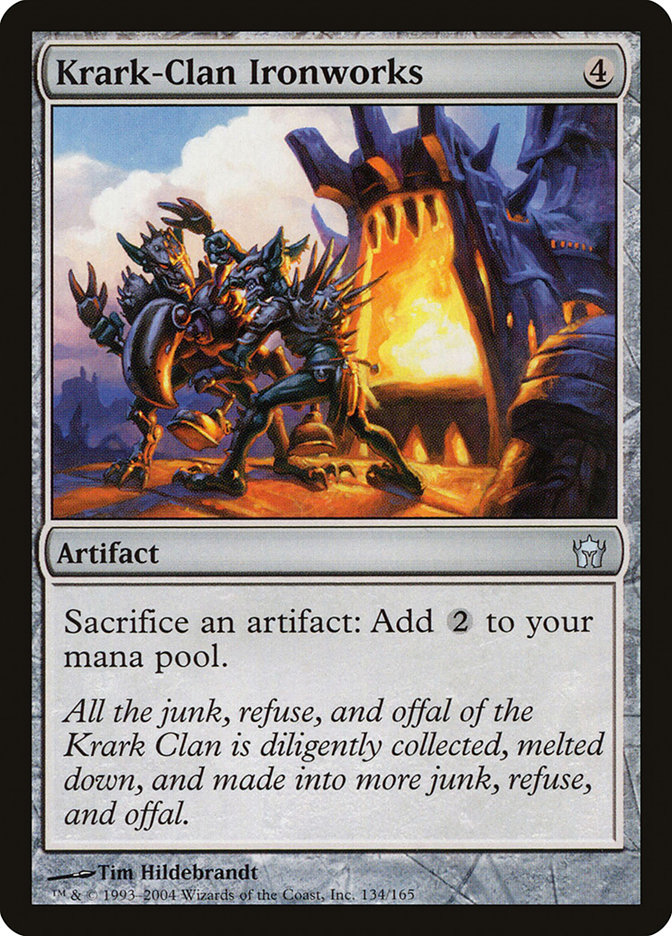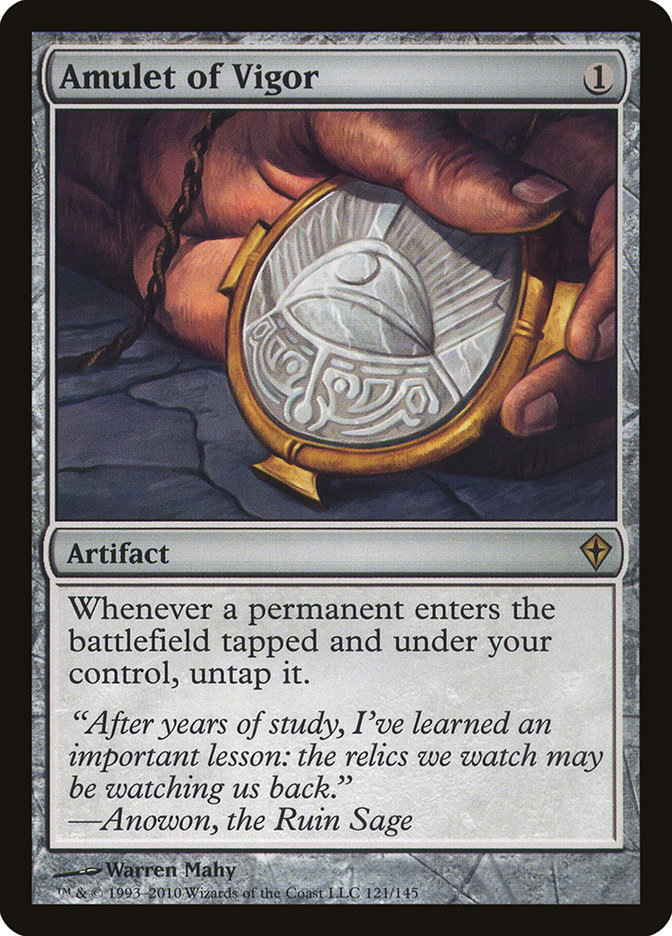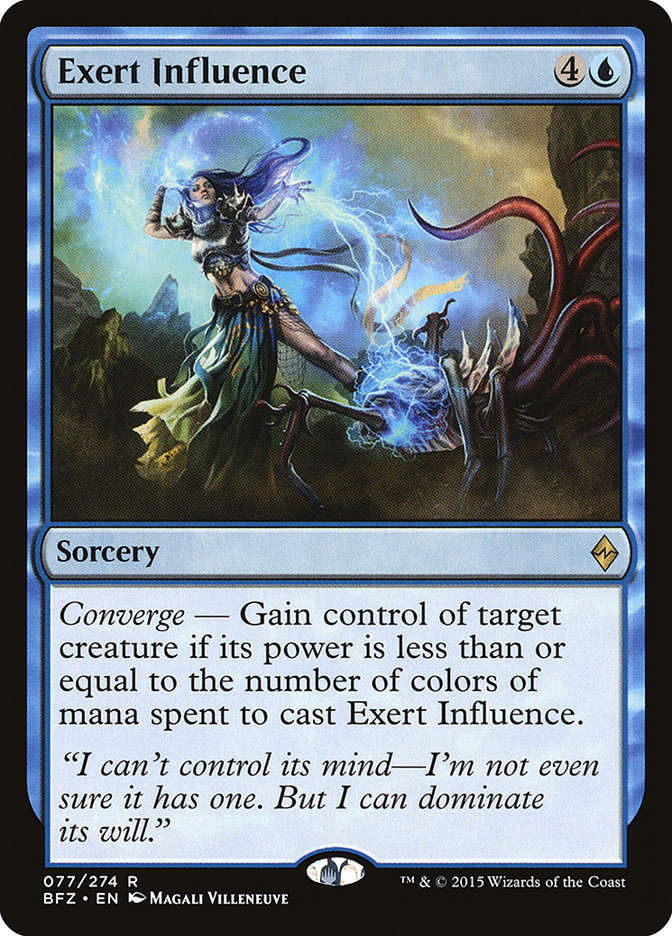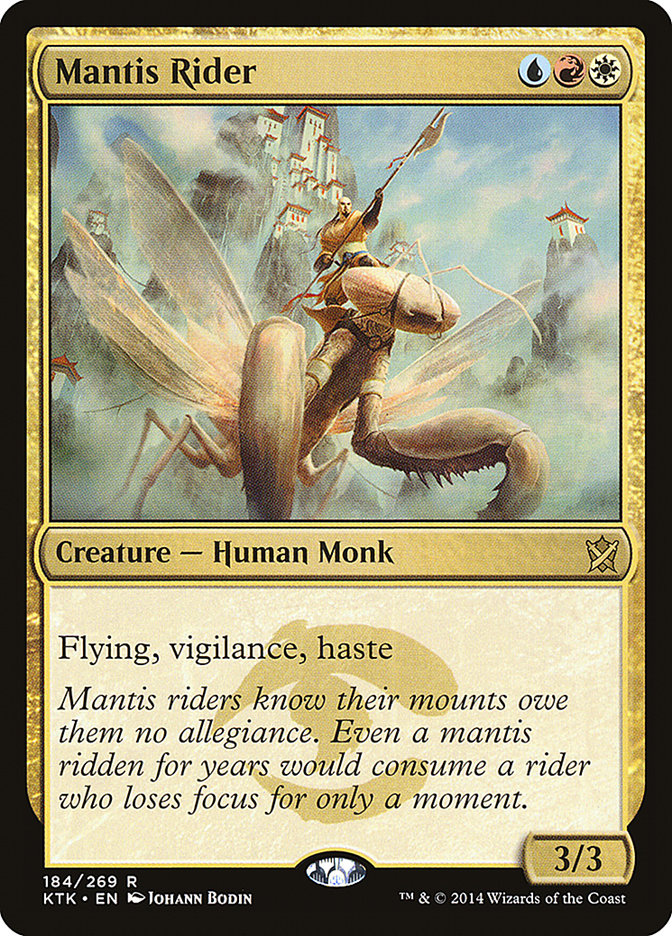Modern is intentionally cultivated to have a shifting metagame. My shorthand advice for how to beat Modern is always, “play the best/least fair deck that no one’s prepared for.” This isn’t an accident. Wizards of the Coast wants Modern to be a diverse and changing format, and they know that the cardpool doesn’t change enough to rely solely on the changing cards to make that happen, so instead they use the banned list to make sure that the best decks are linear decks that can be beaten by a prepared opponent. Jace, the Mind Sculptor and Bloodbraid Elf aren’t necessarily banned because the decks that they lead people to play are more powerful than Affinity, but because the decks they lead to are less linear.
Fair Magic is bad for Modern.
When the best deck is linear, beating it with sideboard hate is easy, so everyone adds more hate to their sideboards, and it stops being the best deck. If all the most powerful things you can do are linear, these sideboard slots that go to beating that best deck come from sideboard slots that were probably targeting another deck. For instance, maybe every white deck trims Rest in Peace to make room for Stony Silence. Now Affinity and Tron are going to be worse decks than they used to be, so they’re probably not the best anymore. Maybe the shortage of Rest in Peace that resulted makes room for Goryo’s Vengeance, Storm, or Living End to become the best deck, and then Rest in Peace gains more stock and those decks get pushed down; however, maybe that comes from space that had been cheap removal, and Twin gains ground. There’s never enough room to beat everything. Something is always neglected. If you can find the thing everyone’s neglecting, you can probably have a great chance in a Modern tournament.
What this means is great for the health of Modern–players are incentivized to move away from the most played (and thus most hated) linear decks, and to play the least played linear decks, which should cause a constant shift in what people bring, generally rewarding diversity. When Jace, the Mind Sculptor or Bloodbraid Elf were the best cards in Standard, the metagames were stable because no one could find a way to effectively hate the reliable card advantage they offered. The Modern banned list is to make sure that the best deck isn’t hard to beat if you try. (For this reason, I wouldn’t be surprised to see something from Twin banned at some point–it’s been successful consistently despite being one of the most played decks, making the case that it’s too resilient for the health–as measured by deck diversity–of the format.)
When a new deck emerges in Modern, it isn’t always the result of new cards being printed. Modern is so large that sometimes things just get missed. The cards in Amulet Bloom or Lantern Control were legal long before the decks really took off. Recently, a variety of Krark-Clan Ironworks decks have gained popularity in Modern leagues on MTGO. Where did these come from? They didn’t really need any new cards.
The obvious answer to me is that someone started playing it or someone wrote about it, and other people thought it was interesting and started iterating. My belief is that there are very few people who try to find new things to do in Modern. The expectation is that if it was worth doing, someone would have already found it. Instead, people who want to try something new in Modern look for something new to them, or something fringe, and iterate on that. This means that once an idea is brought up, it gets refined fairly quickly, but until then, some synergies can just go overlooked for years.
I’d assume Krark-Clan Ironworks was like that, but maybe there’s more to it.
Before Second Sunrise was banned, Open the Vaults decks were almost certainly just a worse version of Eggs, which explains why it hadn’t been a thing earlier. After the banning, the time might not have been right for it. What’s the new card that was printed that made Open the Vaults suddenly viable to the extent that it is?
Well, if I had to guess, I’d say Kolaghan’s Command.
Kolaghan’s Command caused most of the G/B decks to shift from Abzan to Jund. It also lead to a shift in Snapcaster decks from Jeskai to Grixis. This lead to Kolaghan’s Command, Ancient Grudge, and Shatterstorm as the default answers to artifacts rather than Stony Silence.
Open the Vaults doesn’t care about artifact destruction, but it cares a lot about Stony Silence; however, artifact hate in Modern is generally included because people know they have to have a certain minimum ability to interact with Affinity, and once that threshold is met, they’re okay. Open the Vaults isn’t a barrier to entry in the same way. It’s not popular enough, it skirts under the radar, so for now, it avoids hate, and presumably that makes it playable.
So is it coincidence that it wasn’t discovered now, or was it somehow revealed by the metagame niche that opened up? Probably some of each. Someone tried it, and it worked. Maybe people tried it in the past and it didn’t work, so it didn’t spread; but when it works, other people notice, and they pick it up, and it causes a small chain reaction.
What all this teaches us is that Modern decks aren’t just created by new cards but by space created from other shifts in the metagame.
Theoretically, one expects a metagame to reach a stable state, a Nash Equilibrium. (I’d argue that this concept doesn’t happen in Magic. There are too many confounding variables.)
Note that players have different goals. (Among other things, consider Timmy/Johnny/Spike: some players are trying to maximize “fun” or an exposure to certain kinds of experiences that are separate from winning, and their deck choices will be informed by that. Not all players who enter tournaments are pure Spikes.)
Players do not have perfect information. This should be self-evident. In fact, they don’t have anything even close. The metagame is far too complex for players to deduce everything they’d need to make optimal choices, so choices can’t be made assuming optimal actions from others.
While the Nash Equilibrium doesn’t apply, instead, I think we see something that more closely resembles evolution. Players essentially create random mutations in decks by trying out different ideas. Those that are successful win, get noticed, and copied, which is the equivalent of reproducing.
Viewing the metagame as an environment composed of natural organisms that evolve over time, rather than as an abstract game theory puzzle that can be solved more closely matches the observation that change happens gradually–when a new deck comes out in Modern, it rarely captures a huge metagame share, and as it experiences success, it spreads slowly. I’ve heard that Amulet has had an extremely impressive win rate on MTGO. If this is true and it wins more than everyone else, if we were operating in a game theory model, we’d expect it to quickly occupy a huge portion of the metagame. Instead, it has to grow slowly over time as more and more people learn how good it is, held back by the inscrutability of the deck.
What this means is that a deck can be substantially underplayed relative to its power level/win rate in Modern, as it takes the format time to catch up. I think the format is most exploitable when this is happening, because a deck can only be correctly targeted in proportion to its share of the metagame–the cost of attacking it is too high if you can’t expect to play against it. The way this is supposed to play out is that while the deck is unpopular, “if you can’t beat ’em, join ’em” kicks in–the deck is unpopular enough that you can’t justify the effort to beat them, this means others can’t either, and the best thing to do is to play the underplayed deck instead of trying to beat it once you’ve realized this is happening. This should happen until enough people are playing it that it becomes worth targeting, and then it becomes possible to beat. I think there’s a reasonable chance that Amulet has recently reached this point, as I’ve seen a lot more people playing it these days than there were months ago.
Modern and Standard work differently. Both formats need to change over time. As I explained, Modern’s instability is maintained by keeping fragile decks on top. Historically, Standard has relied on a changing cardpool to guide its changes. While Modern is designed to maximize diversity and a naturally shifting metagame, I think Standard is designed to maximize good gameplay. Unfortunately, these are somewhat at odds. Modern’s diversity is enforced through powerful hate. If you’ve ever played a game of Affinity against Stony Silence or almost any deck against Blood Moon, you probably know that these aren’t always the most fun. Similarly, if you’ve ever been run over by Affinity or killed on turn 3 by Infect after you tapped out for a Tarmogoyf, you probably know that playing against linear decks isn’t always the most interactive Magic.
Standard tends to be about gradual advantage from planeswalkers, spells that somehow generate a two-for-one, or a substantial boost in tempo, or maybe by trying to match up gameplans in a favorable way. Generally, Standard is about fair Magic; Modern tends to be about unfair Magic. Fair Magic has a much greater danger of becoming solved or of reaching something that much more closely resembles a true equilibrium.
Somehow, over the last year, Standard doesn’t seem to have fallen into this trap despite being almost entirely about fair Magic. Honestly, I don’t know how Wizards managed to accomplish that, and I’m not sure if they know either.
Whatever the reason, we’ve seen a Standard format that sort of resembles Modern–once a deck gets too big, it gets hated and falls out of favor–the difference is that it doesn’t get hated by sideboard cards; it gets hated by large strategic shifts in what people are doing. We saw this play out in a clear way at #SCGPC. Abzan Aggro was probably the deck to beat coming in–We’ll call it rock, as one usually calls the deck to beat. Scissors for that tournament appeared to be Jeskai Black without Mantis Rider. Mantis Rider is great at stealing games, but structurally, it’s not really well-positioned against Abzan Aggro. They’re going to be the aggressor against Jeskai Black most of the time, and Mantis Rider doesn’t do anything to slow them down. Jeskai’s better suited to fully embracing the control role and using its excellent removal and card advantage to grind Abzan Aggro out. This isn’t the Abzan Midrange of last season. Without Courser of Kruphix and with decreased emphasis on card advantage, this really can be attacked as an aggro deck, and a Jeskai deck that loads up on removal, card advantage, and ideal game-breakers like Exert Influence can fairly easily grind it out.
But, it was paper that won the tournament. Ramp is traditionally poorly positioned against Abzan Aggro–as mentioned, this Abzan deck is much less focused on grinding than last year’s decks were, and it’s much more of a true aggro deck; however, one that can pack solid disruption for ramp if it wants to. Ramp in this format is weak to aggro, since the ramp spells are so clunky, the deck just isn’t fast enough. Lucky for Jim Davis, he managed to avoid Abzan Aggro, as the Jeskai decks knocked it out of the tournament, and then he got to prey on the slower Jeskai decks that rose to the top.
This rock-paper-scissors dynamic has always been the backbone of a successful Magic metagame, and this season we’ve gotten to see it play out very cleanly with the rise and fall of different strategies.
It’s easy to buy into the narrative that the deck of the week really, finally broke it. Maybe you think the Roanoke players built the Jeskai deck that really is robust and enduring enough to become the best deck of the season. I wouldn’t bet on it. It was a metagame call, designed to attack a specific expected field. Things will change, but the challenge is predicting how.
As it becomes more and more clear that the metagame of Standard is a shifting landscape these days, in contrast to the sometimes stable formats of the past, it becomes correspondingly more important to learn to predict the metagame. It used to be that you could just expect 25% This Season’s Deck to Beat, 15% each of the next three decks, etc. These days, it feels much harder to know what things will look like two weeks from now. What’s the “best deck” in Standard now? Jeskai Black? Abzan Aggro? Atarka Red? Esper Dragons? Rally? G/W Megamorph? Bring to Light? You might think it’s clearly not G/W Megamorph, for example, since it’s fallen off the map, but that doesn’t change the fact that at one point, it looked like it could be this season’s deck to beat.
I’d suggest that this probably isn’t even a useful question anymore. All that matters is what to expect for the one tournament you’re about to play, but that’s easier said than done.
What tools do we have to do it? Well, maybe, if the belief is that Standard is shifting in a way that more closely resembles Modern, we need to draw on what we know from that–expect that Standard will evolve, rather than radically shift. While this week’s metagame won’t be last week’s metagame, it will be rooted in it, and it will likely be only a single step away from it. Similarly, if we can believe that all these decks in Standard that looked great at various times maybe really all are great, maybe there’s a point at which it becomes best not to try to predict exactly what people will do, but instead, try to predict what they won’t expect.
If they’re always one step off from where they were, but the problem is that you don’t know what direction the step will be, you may be able to surprise people by going in a completely different direction. As in Modern, choose a deck that was doing something powerful, but one that fights a different fight from the one people seem to be focusing on.
For example, if the format degenerates into various Jeskai and Mardu decks going further and further to out grind each other (starting from Jace, Ojutai’s Command, then upgrading to Jace, Kolaghan’s Command, and Painful Truths, then upgrading to Den Protector with Kolaghan’s Command and Painful Truths, then–as I’ve tried–getting Oblivion Sower into the mix to get the mana advantage in these exchanges of recursive cards), instead, sidestep. These decks draw into more removal, so find something like Ramp, Rally, or Mastery of the Unseen that sidesteps removal.
When you find yourself trying to beat someone at their own game, ask yourself if that’s really the game you want to be playing.








